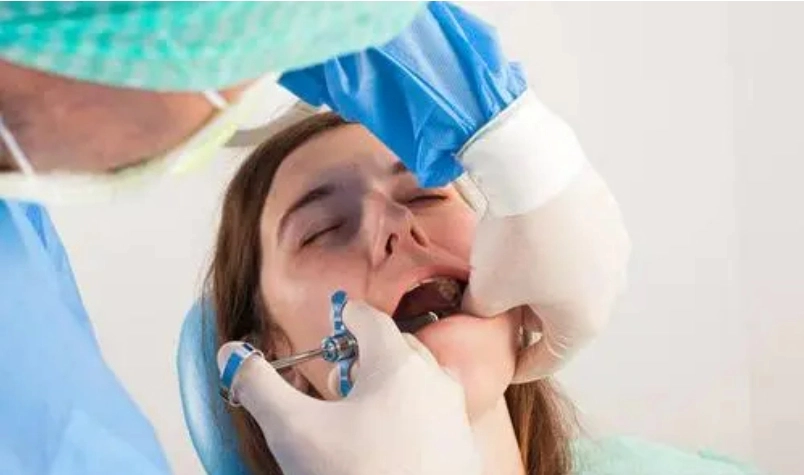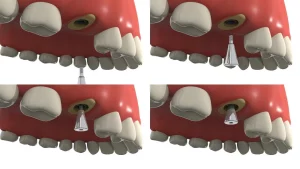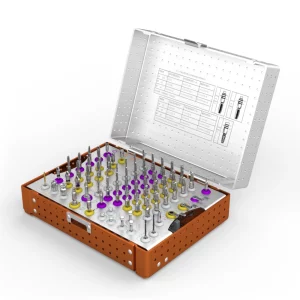It’s not surprising that dentists and other dental experts possess a wide range of instruments and machines for various procedures and treatments. If you frequently visit the dentist, you might easily notice some of the most commonly used tools on their tray. But have you ever been curious about what these tools are called and how they’re used? For dentists, dental students, or even individuals interested in dentistry, understanding the classification, usage, selection, sterilization, and maintenance of dental instruments is crucial. This article will delve into the importance of basic dental instruments and how they can be effectively utilized in routine dental practice.

Classification and Uses of Basic Dental Instruments
Commonly used equipment
Diagnostic Instruments
- Dental Mirror: A fundamental tool in dental diagnosis, the dental mirror provides a clear reflection of the oral cavity’s internal structures, helping dentists observe subtle changes such as cavities, tartar, or periodontal issues.
- Probe: By gently probing the tooth surface and periodontal pockets, the probe detects potential cavities or periodontal problems, offering accurate diagnostic insights.
- Tweezers: Often used to handle small objects or materials like cotton balls, medicated swabs, or filling materials, ensuring precision and safety during treatment.
Cleaning and Scaling Instruments
- Ultrasonic Scaler: Utilizing high-frequency vibrations, this tool removes tartar and plaque, playing a vital role in periodontal treatments and preventing gum disease.
- Manual Scaler: Ideal for finer operations, the manual scaler removes tartar while minimizing damage to teeth and gums.
Restorative and Filling Instruments
- Mixing Spatula: Used for mixing filling materials like resin or glass ionomer, ensuring uniformity and consistency.
- Probe and Polisher: After the filling material has set, probes and polishers are employed to adjust and polish the fillings, ensuring a better fit and improved aesthetics and comfort.
Extraction Instruments
- Elevator: Used to loosen teeth, facilitating the extraction process.
- Extraction Forceps: Designed to match the shape and location of the tooth, ensuring a smooth tooth extraction procedure.
Specialized Dental Instruments
Intraoral Instruments
These instruments are specifically designed for various treatments such as filling, periodontal care, and soft tissue management:
- Fillers, Ultrasonic Root Canal Instruments, Vitality Testers: Used for restorative procedures and root canal treatments.
- Scalers and Whitening Devices: Assist in tartar removal, scaling, and teeth whitening.
- Adhesives and Cements: Various types like zinc oxide cement and glass ionomer cement are crucial for filling and bonding.
Oral Surgery and Implant Equipment
These instruments are indispensable for tooth extraction and implants:
- Extraction Forceps and Elevators: Available in various designs (e.g., anterior, molar, or pediatric).
- Bone Files, Hammers, and Surgical Mixers: Used for shaping and refining the surgical site.
- Ultrasonic Scalpels and Negative Pressure Suction: Aid in precision and patient comfort during procedures.
Prosthodontic Instruments
Essential for dental restoration and prosthetics:
- Impression Mixers and Porcelain Furnaces: Used for creating accurate molds and prosthetic components.
- Resin Teeth and Polishing Equipment: Used for durable and aesthetically pleasing prostheses.
- Articulators and Wax Plates: Essential for bite alignment and occlusal adjustments.
Orthodontic Instruments
Designed for correcting and aligning teeth:
- Brackets, Archwires, and Orthodontic Pliers: Help in aligning teeth and securing orthodontic fixtures.
- Elastic Bands and Ligature Wires: Provide tension for gradual adjustments.
Auxiliary Instruments
Supportive tools for hygiene, preparation, and patient care:
- Curettes and Spoon Excavators: Remove decayed tissues and debris.
- Suction Tips and Mouth Openers: Ensure a clean and accessible operating field.
- Sterilization and Disposable Items: Such as gloves, masks, cotton swabs, and disinfectants, ensure hygiene and safety.
In summary, dental instruments are diverse, with each tailored to specific treatments. Dentists select the appropriate tools based on the patient’s needs to ensure optimal outcomes.
How to Choose the Right Basic Dental Instruments
Considerations for Selection
- Diagnosis or Treatment Needs: Select tools based on the specific condition and treatment plan of the patient.
- Material and Durability: Opt for high-quality materials like stainless steel for longevity, or disposable plastic instruments for improved hygiene.
- Brand and Quality Certification: Ensure the tools are from reputable brands and meet quality standards for safety and reliability.
Sterilization and Maintenance of Dental Instruments
Sterilization Steps
- Cleaning: Use specialized detergents or disinfectants to remove visible debris.
- Ultrasonic Cleaning: Employ ultrasonic cleaners for thorough cleansing of hard-to-reach areas.
- High-Pressure Sterilization: Place instruments in an autoclave to achieve a sterile environment through high-temperature steam.
Care Based on Material
- Metal Instruments: Use non-corrosive cleaning agents to protect the surface.
- Plastic Instruments: Avoid high temperatures to prevent warping, using gentle cleansers instead.
Regular Checks
Inspect instruments routinely for damage or wear, replacing defective items to maintain optimal performance.
Common Issues and Solutions in Using Basic Dental Instruments
Challenges
- Improper Use: Excessive force or incorrect techniques can harm patients or damage tools.
- Instrument Damage: Aging or mishandling can reduce the effectiveness of tools.
Solutions
- Enhanced Training: Offer systematic training to improve operational skills for beginners.
- Regular Maintenance: Check and repair instruments periodically.
- Spare Instruments: Always have backups available for emergencies.
Conclusion
Basic dental instruments are crucial in improving the quality of diagnosis and treatment. Dentists and students should understand their use, selection, sterilization, and maintenance. Continuous learning and practice are key to optimizing instrument usage while prioritizing patient safety and comfort.
Recommendations
- Strengthen Theoretical Knowledge: Stay updated on the latest developments through books and research.
- Attend Training Courses: Learn advanced techniques and instrument handling.
- Hands-On Practice: Work under supervision to gain practical experience.
By consistently honing skills, dentists can excel in delivering high-quality care and ensuring patient satisfaction.





